PhD in Physics
Specialization Astrophysics
University of Alberta
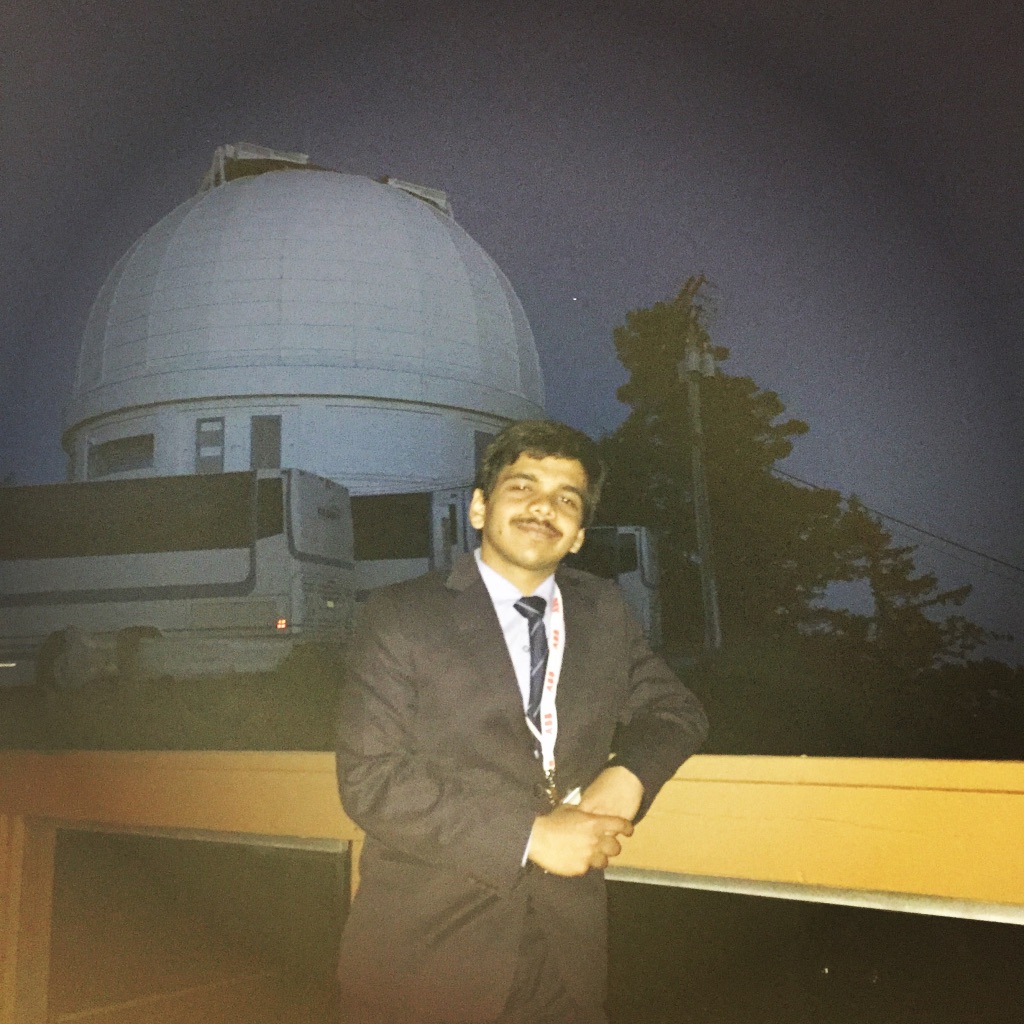
Understanding the enigma of the unknown has always driven man to push his boundaries of knowledge. In this regard, the universe has been the most puzzling and wicked creation — it constrains us from performing experiments, making us meer observers to witness its magic. The curiosity to discern the mysteries of the cosmos has not only increased man's understanding of physics but also carved the path for new technologies. Since the tracking of the motion of the moon and the sun by early man to understand seasons, we have come a long way into building large telescopes and sending satellites into space to study the night sky. With the beginning of a new era of multi-messenger astrophysics and instruments such as JWST and Athena waiting for launch, we indeed are in the golden age of astronomy.
Hi!! I am currently a PhD student in physics at the University of Alberta specializing in astrophysics. I work with Prof. Craig Heinke and study 'dead' stars (neutron stars, black holes and supernova remnants), especially in high energy regime. My work revolves around analyzing the temporal and spectral behavior of data to understand high energy astrophysical phenomena. I enjoy the cycle of trying to account for the observed data using theoretical models and suggesting changes to the existing theories for better interpretation of the data, a theme featuring consistently in these areas of research. Besides compact objects, I am also follow research in transient objects, electromagnetic follow-up of gravitational wave detections and instrumentation for high energy detectors. Please refer my CV for more details.
Specialization Astrophysics
University of Alberta
Specialization Astrophysics; CGPA: 4.0/4.0
University of Alberta
Minor: Physics, Computer Science; CPI: 9.48/10
Indian Institute of Technology Bombay
The University of Alberta Doctoral Recruitment Scholarship recognizes the superior academic and sholarly achievements of incoming PhD students. I was awarded CAN$5000 from the Faculty of Graduate Studies (FGSR).
Institute silver medal is awarded to the most outstanding student in terms of academic performance within each department. Added to having the highest cummulative grade point in Aerospace Department 2017 batch, I had taken several additional courses thus completing honors in aerospace, and minors in physics and computer science.
Technical organization colors are given for exceptional performance in planning and organization of technical events. As the manager of Krittika - the astronomy club of IIT Bombay, I coordinated lectures, documentary screenings, telescope handling sessions and field trips to Gaint Metrewave Radio Telescope, Udaipur Solar Observatory and Mount Abu Infrared Observatory within a budget of ₹200,000. We also held night sky observation sessions on the weekends throughout the 2015-2016 term. As a part of Student technical Activities Body, I was also responsible for organizing the Institute Technical Summer projects and Tech-Expo.
I was awarded cash prizes of ₹3000- and ₹2000 in the years 2015 and 2016 respectively for excellent academic performance. These cash prizes are granted to top two students of each departments, based on their grade points in a given year.
IOAA is an annual astronomy and astrophysics competition for high school students which overseas participation from about 50 countries. I represented India at the international level as a part of a five-member team and won a bronze medal for the country. Even during the orientation-cum-selection camp before the internationals, I was awarded for the best theory solution.
IAO is an annual astronomy olympiad organized by the Eurasian Astronomical Society for students of age group 14-18. I was a part of a three-member team that represented India at the international level, and I bagged a silver medal for the nation. During the selection camp for the international event, I was awarded for the best observer.
Massive stars end their lives through supernova explosions and can form neutron stars (NSs), black holes (BHs) and supernova remnants (SNRs). However, our knowlegde of these compact objects and supernova remnants is limited to only a few bright ones. Poission noise from the low photon counts, detector response and the background from the nearby sources and from the detector can make the analysis of faint X-ray sources very challenging. In my masters thesis, I explored ways to account these effects and properly study faint X-ray sources or sources with high background. In particular, I studied the properties of four systems — binary millisecond pulsar (MSP) 47 Tuc W to show the continuation of orbital X-ray variability and to understand the nature and geometry of the intra-binary shock, candidate active galactic nuclei (AGN) in Henize 2–10 and NGC 4178 and identified them to be supernova remnants (SNRs), and proved the presence of neutron stars (NSs) in supernova remnant 1E 0102.2-7219 and studied its properties.
My project on candidate active galactic nuclei in Henize2–10 and NGC 4178 demonstrated the power of mid-resolution X-ray CCD spectra to distinquish line-dominated spectra from continuum emission. For my PhD, I would like to develop data-mining algorithms to identify line emission in the X-ray spectra without the need for detailed X-ray spectral analysis. Such a tool would be incredibly useful in identifying faint low-mass X-ray binaries (LMXBs) among the vast population of chromospherically active stars. Studying the Fe-K line of AGN can also reveal their redshift and distance.
I also like to follow research in other areas of astrophysics. I am especially drawn towards multi-wavelength studies of high-energy transient events and follow-up of gravitational wave detections. I also enjoy studying active galactic nuclei and other accreting systems and devloping instruments and back-end softwares for high-energy observations. Please look into my CV for further details.
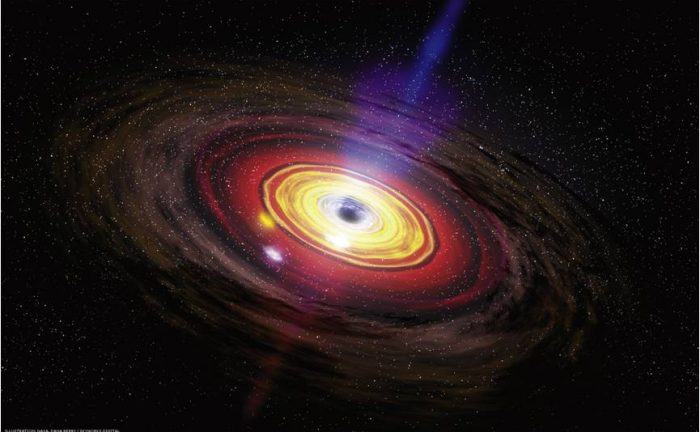
AGN are centers of galaxies where the compact nuclear black hole is rapidly accreting matter from the surrounding regions. These high energy objects harbour several physical processes, thus emitting radiations across the entire electromagnetic spectrum. Recent discovery from IceCube show that AGN with jets pointed towards us could be the source of high energy neutrinos.
I study the X-ray spectra to determine if the emission is from AGN or other sources like supernova remnants. We recently showed that the proposed candidate AGN in Henize 2-10 and NGC 4178, could more likely be a supernova remnant (Hebbar et al., 2019a)
As a part of my PhD thesis, I plan to develop an algorithm that can be used by X-ray CCD instruments to identify strongly-line dominated spectra even in low-count regime. Such a tool can allow us to recognize Fe-K lines in obscured AGN, Fe-L lines from chromospherically active stars, Si lines from young supernova remnants etc., thus allowing us to analyze the nature of the X-ray emission.
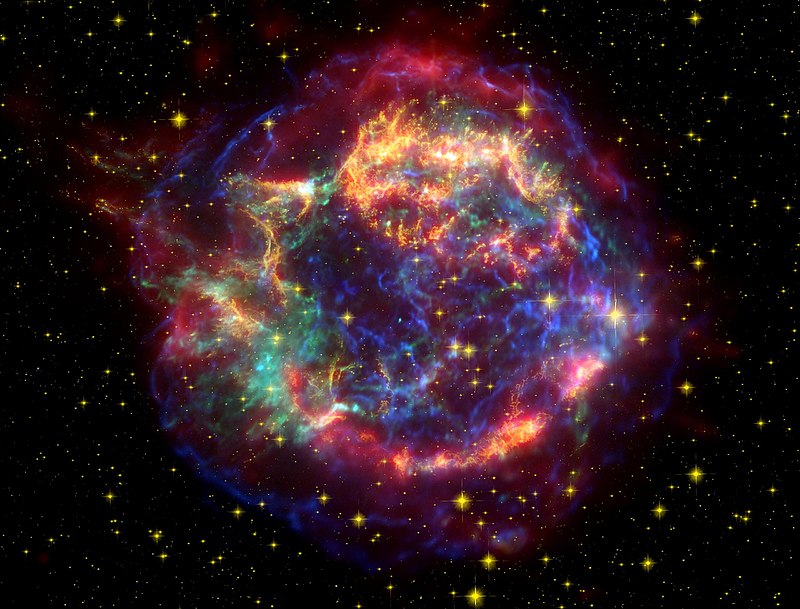
SNRs are the aftermath of highly energetic supernova explosions. The hot plasma in the supernova results in the emission of electromagnetic (EM) radiation including X-rays. EM radiation can also be emitted due to the interactions of expanding material with the surrounding circum-stellar medium resulting in a forward shock.
I enjoy performing spectral analysis on X-rays from SNRs for a better description of their structure. It has been argued that the broad lines in radio-quiet AGN could be produced by young SNRs in starburst galaxies. Thus a better understanding of their high metallicity line-dominated spectra could allow us to distinguish SNRs from AGN in low-count regime.
I am also interested in understanding the nature of compact objects left behind in the SNRs. Investigating the X-ray spectra of compact object in SNR 1E0102.2-7219, has provided evidence towards its high magnetic field and also hinted towards the presence of a carbon atmosphere (Hebbar et al., submitted to MNRAS).
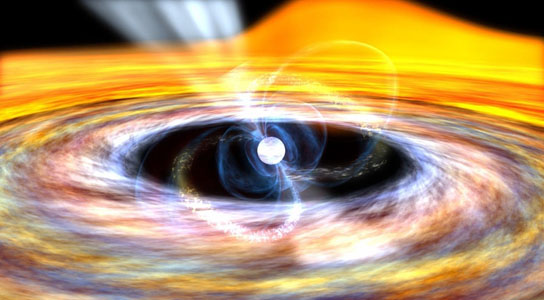
Millisecond pulsars are a separate class of radio pulsars that have rotation periods of a few milliseconds. The small spin periods and low magnetic fields suggest towards a separate evolutionary channel for these pulsars. Detections of millisecond X-ray pulsations in accreting low-mass X-ray binaries (LMXBs), and the discovery of transitional MSPs switching between the radio pulsar and LMXB phases have proven that MSPs are recycled neutron stars that are spun up due to accretion from a companion star.
Studying the X-ray variability of eclipsing binary MSPs can help us understand the Intra-Binary shock caused by the interaction of pulsar wind and the wind from companion star. Constantly keeping track of this variability allows us to search for more transitional MSPs. I have analyzed the X-ray emission from 47 Tuc W and argued for the variability in the source (Hebbar et al., in preparation). Along with the X-ray spectra and the optical light curves, we have attempted to model the IBS in the system.
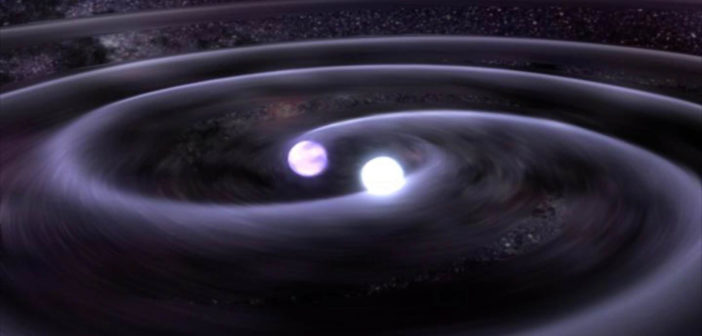
The detection of GW170817 triggered a new era of multi-messenger astronomy. The analysis of gravitational wave, and the subsequent electromagnetic follow-up confirmed the association between binary neutron star (BNS) merger and short gamma ray bursts (GRB) and provided evidence for the BNS mergers to be the origin of r-process elements.
In this era of transient astronomy it is important to have all-sky monitors that could watch the skies at all times. Due to the large field of view of these all sky monitors, localizing the source after detection could be confusing. I worked with Prof. Varun Bhalerao to develop a python package that could be used to localize the GRB and GW detections in such instruments on satellites orbiting the earth. Such a tool would be crucial for detectors like AstroSAT CZTI and future missions like LISA. In another project under Prof. Bhalerao, I looked for ways to automatize the search for GRBs in AstroSAT CZTI instrument. In collaboration with the GROWTH, Caltech group, I had also prepared a video depicting the electromagnetic follow-up of GW170817, which was used as a part of Caltech press release on the BNS merger event.
As a student interested in research from young age, I have worked on several projects as a part of my graduate and undergraduate studies. Here is a list of some selected projects that have pushed me further towards pursuing research in astrophysics.
Black holes in dwarf/bulgeless galaxies play a crucial role in studying the co-evolution of galaxies and their central black holes. Identifying massive black holes in dwarf galaxies suggests that the growth of black holes could precede that of galaxies. However, some of the most intriguing candidate AGN in small galaxies have such low luminosities that the sample is vulnerable to contamination by other sources, such as supernova remnants. We re-analysed Chandra X-ray Observatory observations of candidate active galactic nuclei (AGN) in Henize 2-10 and NGC 4178, considering the potential signals of emission lines in the minimally-binned X-ray spectra. We find that hot plasma models, which are typical of supernova remnants, explain the observed spectra much better than simple power-law models, which are appropriate for AGN. We identify clear signals of X-ray lines in the faint X-ray source identified with the radio source in Henize 2-10 by Reines et al. 2016. Combining our work with the MUSE measurement of the ionization parameter in this region by Cresci et al. 2017 indicates that this radio and X-ray source is more likely a supernova remnant than an AGN. A similar analysis of the low-count X-ray spectrum of a candidate AGN in NGC 4178 shows that a hot plasma model is about seventeen times more probable than a simple power-law model. Our results indicate that investigation of X-ray spectra, even in a low-count regime, can be a crucial tool to identify thermally-dominated supernova remnants among AGN candidates.
Redback millisecond pulsars (MSPs) typically show pronounced orbital variability in their X-ray emission due to our changing view of the intrabinary shock (IBS) between the pulsar wind and stellar wind from the companion, Some redbacks (“transitional” MSPs) have shown dramatic changes in their multiwavelength properties, indicating a transition from a radio pulsar state to an accretion-powered state. The redback MSP 47 Tuc W showed clear X-ray orbital variability in Chandra ACIS-S observations in 2002, which were not detectable in longer Chandra HRC-S observations in 2005– 06, suggesting that it might have undergone a state transition. However, Chandra observations of 47 Tuc in 2014–15 show similar X-ray orbital variability as in 2002. We explain the different X-ray light-curves from these epochs in terms of two components of the X-ray spectrum (soft X-rays from the pulsar, vs. harder X-rays from the IBS), and different sensitivities of the X-ray instruments observing in each epoch. However, when we use our best-fit spectra with HRC response files to model the HRC lightcurve, we expect a more significant and shorter dip than that observed in the 2005–06 Chandra data. This suggests an intrinsic change in the IBS of the system. We use the ICARUS stellar modelling software, including calculations of heating by an IBS, to model the X-ray, optical, and UV light-curves of 47 Tuc W. Our best-fitting parameters point towards a high-inclination system (i ∼ 60 deg), which is primarily heated by the pulsar radiation, with an IBS dominated by the companion wind momentum.
'Pratham' is the first satellite under the Indian Institute of Technology Bombay (IIT Bombay) Student Satellite Project. This paper provides a brief overview of thermal subsystem. The objective of the sub-system is to ensure the temperature management of the satellite so that it survives under different thermal loads.
The design approach has been briefly explained. A CAD model of the satellite is prepared and it is then meshed to obtain Transient Thermal analysis in ANSYS. Different loads of heat flux and internal heat generation and solar radiation is applied. Some of the features like Multilayer Insulation (MLI) and Optical Solar Reflector (OSR) window have been incorporated for thermal control.
All satellite sides will be black anodized from inside. Heat sink is used for power amplifier in telemetry and beacon boards. 4 sides are to be covered by MLI blankets. High dissipation components are placed on the PCB using thermal filler materials. Solar panels back side will be covered with low emittance tape. Monopole holder is covered with MLI blanket. Monopole is polished without applying any coating. OSR requirement for the satellite is on the anti-sun side panel. Heat shrinkable tubes between holder and monopole are used.
The analyses were done in steps. In the first step a simple hollow cube with heat flux and radiation is applied. This model helps to understand the interface of ANSYS and basics of simulation. Next steps model used the complete satellite model with removed those minor parts which did not contribute to thermal coupling to reduce the analysis time. Second model gave approximate result in less time which helped in different frequent design iteration. The final design was modeled and analyzed with complete thermal condition which finally gone through different iteration depending on constrained by other subsystems.
The thermals sub-system has started a new initiative called as virtual laboratory which is openly available on the website of Pratham. Virtual laboratory gives the data of solar heat flux for different orbital altitude and inclination. All the thermal analysis were done in ANSYS and IDEA-S using the parallel processing feature on server to reduce the analysis time. Using the thermal field obtained thermal stress was analyzed.
We proposed for a high energy detector as a payload for India's first Venus mission. We had a three-fold objective - to study Venusian Gamma ray flashes for detailed undertsnading of Venusian astmosphere, closer look at transients on the solar disk to understand the coronal heating mechanism, all-sky GRB monitor to improve the localisation of the earth. I was involved in calculating the improvement in localisation using Earth-Venus triangulation and Earth-Venus-Mars triangulation and estimating the avergae sky-coverage for the desired orbit of the Venusian orbitter. I also studied the properties of Venusian Gamma Ray Flashes to evaluate the feasilibitly of the payload for the given orbit. After the rejection of the payload, I have generalised the python code for a system of N satellites around the earth.
Currently, the Cadmium Zinc Telluride Imager(CZTI) only verifies the detection of GRBs, given the time of trigger. I was involved in designing an algorithm to search for GRBs in the data collected by CZTI on-board AstroSAT. In this algorithm, I checked for simultaneus outliers in multiple CZTI quadrants, across multiple time interval and energy bins. The detection threshold could be tuned for different false alarm rates.
We implemented a Particle-in-Cell approach to computationally model unmagnetized collisionless shocks, and understand its stucture. We used the 2-dimensional space, 3-dimensional velocity open source code, WARP for our simulations. Through our results, we showed the development of magnetic fields along the shock through Wiebel instabilities in the shock. We also analyzed the affect of different velocities and composition of plasmas on the properties of the shock.
In this project, I learnt about the B-mode polarizations in cosmic microwave background (CMB), and how their study could help is compare different inflation models. We calculated covarience spectrums for hypothetical parameters in these inflationary models and compared it with the Plank and COBE data.
Since I want to pursue a career in academics, I had been practicing the art of teaching since my undergraduate. I have been a teaching assistant (TA) for several courses during my undergraduate and graduate studies. Recently, I also attended a week long workshop on teaching and learning as a part of the graduate teaching and learning (GTL) program.
This course deals with the theoretical and observational aspects of star formation and stellar evolution. Students get an overview of basic physics in main-sequence stars, white-dwarfs, neutron stars, supernova, black holes, stellar atmosphere and stellar spectra. As a TA, I am responsible for grading the written and online (python programming) assignments, mid-term and end-term examination.
This is an introductory astronomy course meant to give a flavour of astronomical obsevrations and techniques. The course also discusses the formation and evolution of planetary and non-planetary bodies in the solar system. This course also has a practical component where students make observations of celestial bodies through the university telescope. As a TA, I assit the professor in grading the examinations and conduct the observations.
I have succesfully completed level one of GTL program by attending 21 hours of lectures during the GTL week. The lectures dealt with a various topics including making the first impression, effective teaching in lab, ethical conduct, planning lessons and active learning.
This course deals with the structure of galaxies, kinematics and dynamics of stars in galaxies, interstellar medium and its interaction with photons, and active galaxies. This course also provides and introduction to cosmology. As a teaching assistant, I graded the weekly assignments, mid-term and end-term examinations.
This course introduces the topics of stellar evolution and cosmology. The course emphasises on the physics of these phenomena, with a primary aim of developing the undestanding of the universe. As a teaching assistant, I graded the assignments and proctured the mid-term and end-term examinations.
This course deals with newtonian mechanics and wave propogation. I was a teaching assistant for the laboratory part of the course, which provided a practical experience to the concepts learnt in lectures, and was incharge of 45 students. I was responsible for demonstrating the experiment, answer queries of students on the lab and grade their reports.
This course introduced the concepts of special relativity, quantum mechanics and condensed matter to first year undergraduates. Overr the course of my undergraduate studies, I was appointed as a TA for this course four times. As a TA I held weekly tutorials, where we solved numerical problems based on the concepts learnt in the lectures. I also proctured and graded the quizzes, mid-term and end-term examinations
This course discusses the numerical ways to solve linear and differential equations and dealing with the corresponding numerical errors. I was appointed as the TA for this course thrice during my undergraduate studies. As a TA I was in-charge of weekly tutorials, where we revised the topics learnt in class and solved numerical problems based on those topics. I also invigilated and graded the examinations.
This is an introductory course meant to give the flavour of biology, biotechnology and bio-engineering to first year undergaduates. As a TA, I was responsible for weekly tutorials, where we discussed various applications of engineering in biology and how several engineering systems were inspired from biological systems in living organisms.
I would be extremely happy to discuss on my research and other topics in physics. I personally prefer e-mail for conversations and official appointments. In case you don't prefer that, you can drop by my office. Also, feel free to contact me through other means, though I might be slower at responding in such situations.